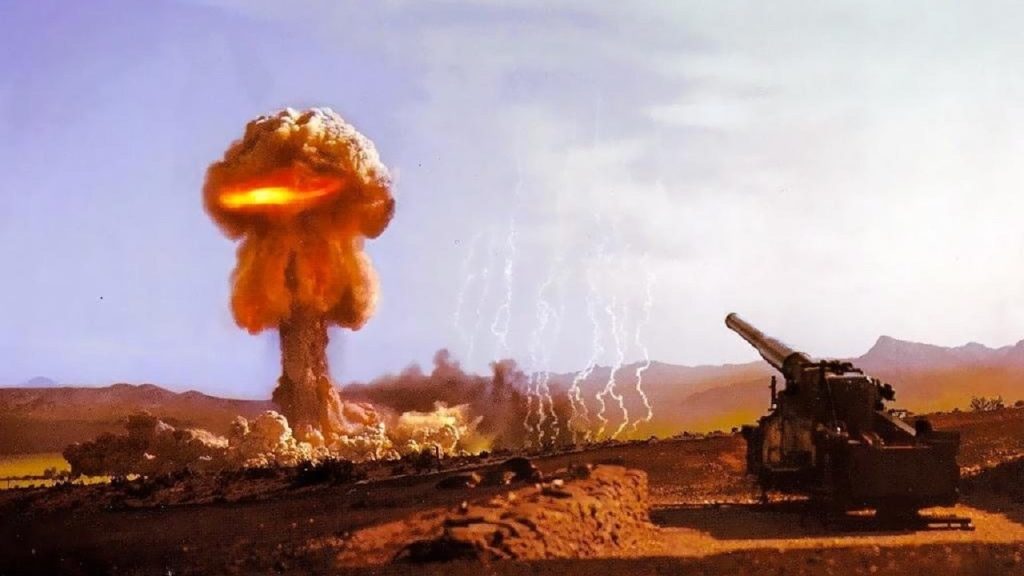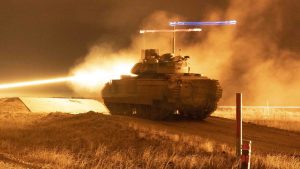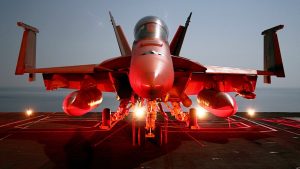The Atomic Cannon, often known as Atomic Annie, was fired only once. Its official name was the M65 280mm Motorized Heavy Gun.

Aircraft, missiles, and submarines are the “nuclear trinity,” three methods of delivering nuclear weapons. What if I told you that another U.S. weapon during the Cold War could have triggered a nuclear exchange? When I say “atomic cannon,” I’m referring to “Atomic Annie,” the United States’ largest mobile artillery system.
The Atomic Cannon, or the M65 280mm Motorized Heavy Gun as it was officially known, was only used once, thankfully, and never caused a nuclear crisis between the United States and the Soviet Union.
The name “Atomic Annie” comes from the Krupp K5 “Anzio Annie,” a huge piece of railway artillery used by the Germans in World War II. The 288mm Krupp K5 weighed a staggering 436,000 pounds, including the rail car transported it in.
It could hit a target 40 miles away with pinpoint accuracy thanks to its rifled barrel. There was a total of 562 pounds of the shell.
The United States Atomic Annie M65, developed in the early 1950s, was distinct from the Krupp K5. It could launch a nuclear shell of equal or greater destructive potential than the atomic bombs dropped on Japan during World War II.
In 1952, the 47-ton atomic gun (or 86 tonnes with its vehicles) entered service.
To carry the gun, you needed a system nearly 39 feet long and could go 30 miles per hour. This system included front and rear 4X4 semi-trucks. A team of five to seven men was required to fire the cannon. Each system was a big investment at $800,000 in 1950s currency. Around $8.9 million as of right now in terms of money
The M65 is so advanced that it has a webpage, and the gun’s specifications are impressive. ” It can insert the gun and ready to fire in about 12 minutes, and it can be returned to the traveling mode in about 15 minutes,” it says on its website.
The 280mm gun’s publicly recognized maximum range was 20 miles, with hits within 20 yards. According to a former soldier stationed in Okinawa who used M65s, the greatest effective range is only 35 miles.
The W-9 15-kiloton nuclear T124 280-mm projectile was inside Atomic Annie’s firing range. The Army’s Atomic Gun was ready for testing by 1953. Two cannons were shipped by rail from Fort Sill, Oklahoma, to the Nevada Test Site (Nevada Proving Ground) for the Grable Test of Operation Upshot-Knothole.
A nuclear projectile fired from the gun traveled eight miles before exploding 524 feet above the strike site and sending debris soaring 500 feet in all directions. A total of 15 kilotons were produced.
One estimate put the blast’s killing power at a full Soviet division.
Planning was a driving force behind the creation of Atomic Annie. After World War II, President Dwight Eisenhower hoped the country would reap the benefits of what he called “waging peace.” He felt that defense spending was excessive. He reasoned that nuclear weapons on the battlefield could reduce the need for human troops and more traditional weaponry like tanks and artillery.
Atomic Annie arose because of this plan to make an army based on nuclear weapons.
Twenty new atomic cannons were built and shipped to Europe and Korea. There are now only eight people left.
The original Atomic Annie used in the test is stored at Fort Sill, while gave another to the Smithsonian.






